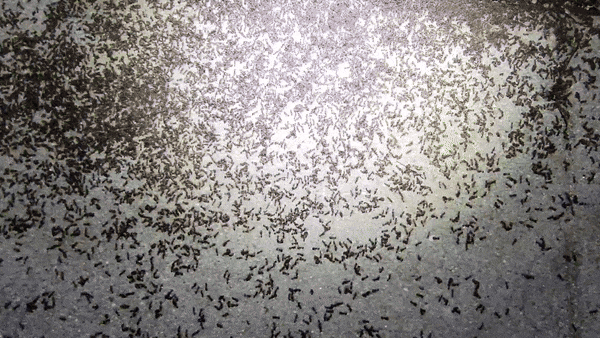Hello folks who wonder if there should be a support group for those affected by Prius catalytic converter theft,
If you have been observing the world around you while you add another wrinkle around your eyes every year, you might have noticed a pattern that repeats every year during spring.
- You end up buying clearance sale items from REI not because you need them but because they are at a discount.
- Starbucks promote their iced caramel beverages to counter the warmer weather in spring.
- People will start being a brand ambassador for Benadryl.
- Idiots will trample through fields of wildflowers to satiate their Instagram gods.
Near our homes, on the pavements lining our streets, a constant battle takes place as neighboring ant colonies vie for dominance and prime real estate. I'm talking about pavement ants engaging in territorial disputes. For those unfamiliar with this phenomenon, please read this post first.
When I revisited the location at night, I noticed a change in their behavior when I used a flashlight to illuminate the area after sunset.
When the flashlight is held far away, distributing the light over a wide area, its effect on them is minimal.
However, when the flashlight is focused on a single spot, you can observe the ants bringing their battle to the illuminated area. Much like Hollywood celebrities and social media influencers, these ants can't resist being in the spotlight.
I donned protective gear, including a hard helmet and a bulletproof vest with a "Press" badge, and ventured into the battlefield to report on events that other media companies won't cover.
Remarkably, some ants with amputated limbs continued their futile struggle to stand, despite lacking the necessary appendages to support themselves.
The ants instinctively aimed to disarm their enemies in battle, not necessarily kill them. They would do that by amputating the limbs of their opponents. This often involved multiple worker ants from one colony teaming up on a single foe.
Such is the intense hatred for their opponents that even after losing limbs, these ants refuse to abandon the fight, as retreat would bring dishonor to their colony. Observe the ant who is holding on to the moving ant and how it has no limbs at all.
Many people ask why I don't interview the ants fighting the war and inquire about their feelings regarding the conflict. The problem is, aside from the deceased, every ant is fully engaged in the battle.
The following morning, as I walked past the site of the previous night's battle, I witnessed an ant scurrying about with a dead comrade still clinging to its body. Scattered around were the lifeless bodies of the fallen, soon to be carried away to their final resting places by the next gust of wind.














No comments:
Post a Comment
Did you learn something new in this post? Let us know in the comments below